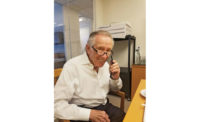Structural engineer Bart Riberich, travel mechanism consultant for the New Atlanta Stadium's retractable roof, is no stranger to convertible sports venues. Of the eight completed in the U.S., he has been involved with six.
Riberich honed his travel-mechanism design skills while working for Minneapolis-based Uni-Systems LLC. He started there in 1994 and became president in 2006.
On Jan. 1, he took on the risk by buying Uni-Systems' kinetic-architecture assets from its founder and CEO, Cyril Silberman. Riberich and his 31 employees are still in Minneapolis, operating under the name Uni-Systems Engineering Inc. "It was a natural handoff from Cyril, who wanted to reduce his work load," says Riberich.
Riberich's first retractable sports roof was at Minute Maid Park, a baseball field for the Houston Astros that opened in 2000 under the name Enron Field. Projects in Houston, Phoenix, Indianapolis, Dallas and Miami followed.
 |
| Riberich |
Riberich's Uni-Systems, like the old one, offers kinetic engineering and project management services. The firm has more than 15 active jobs, including maintenance contracts, says Riberich.
The largest revenue generator is a secret project: a ride for a major entertainment company. Another contract is for the mechanism to open and close the World Trade Center Transportation Hub's skylight. The project, which consists of biparting glass panels, is unlike any other, mostly because of the security requirements, says Riberich.
He calls the design for the operable roof for the New Atlanta Stadium "clever" because the operable panels appear to be rotating when, in fact, all the movement—though on the diagonal—is linear. It is also on the level. That means that, from a mechanical standpoint, no work is being done because nothing is being lifted. Riberich says the absence of a gravity force is about the only simple part of his most complicated sports project to date.





Post a comment to this article
Report Abusive Comment